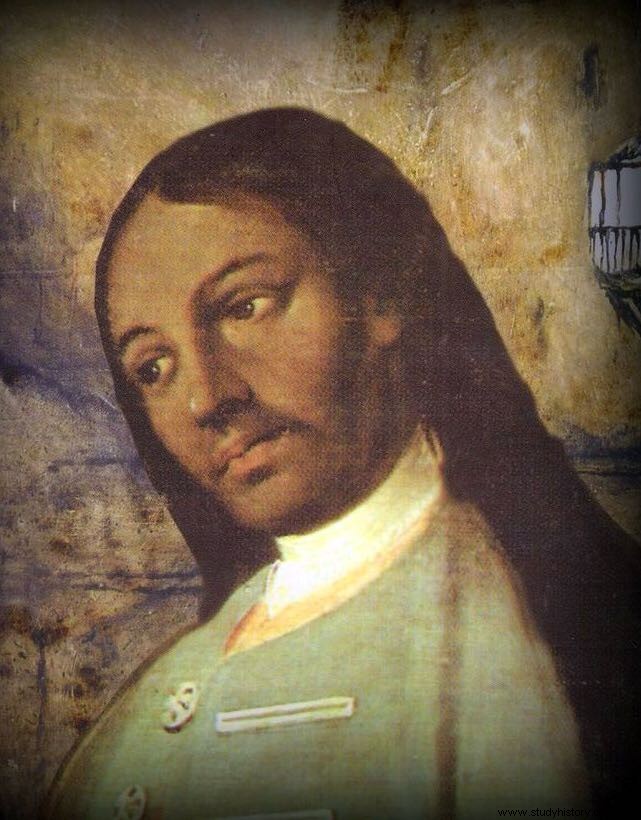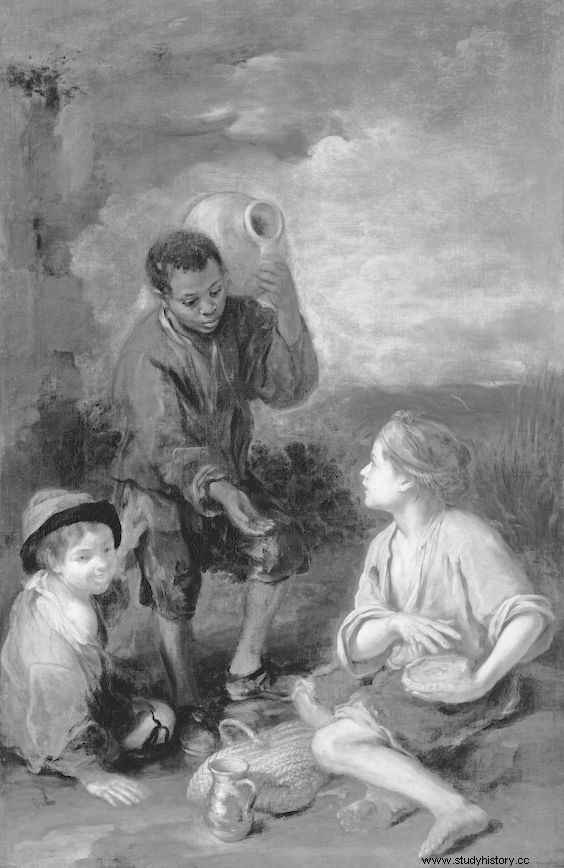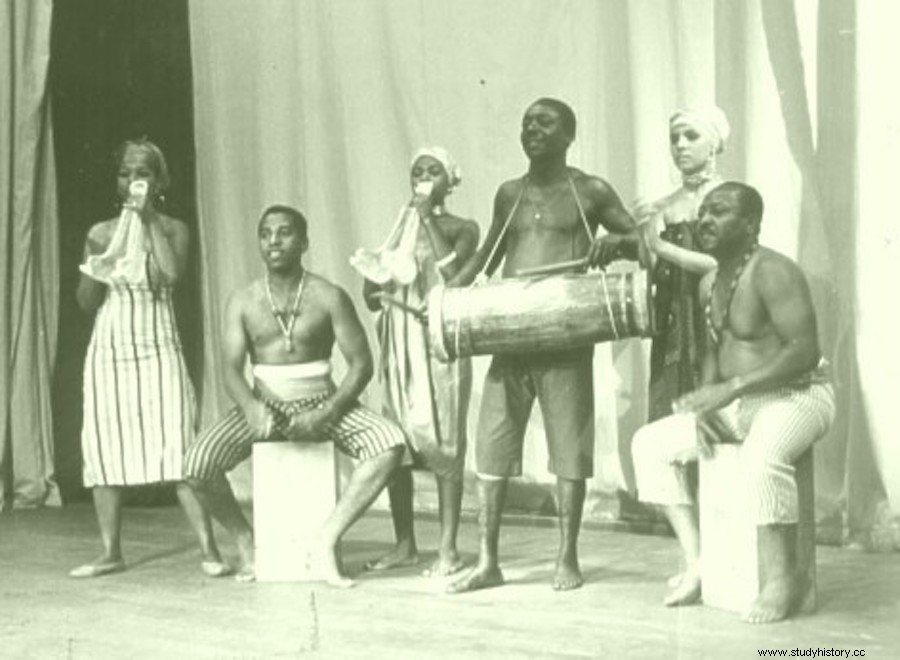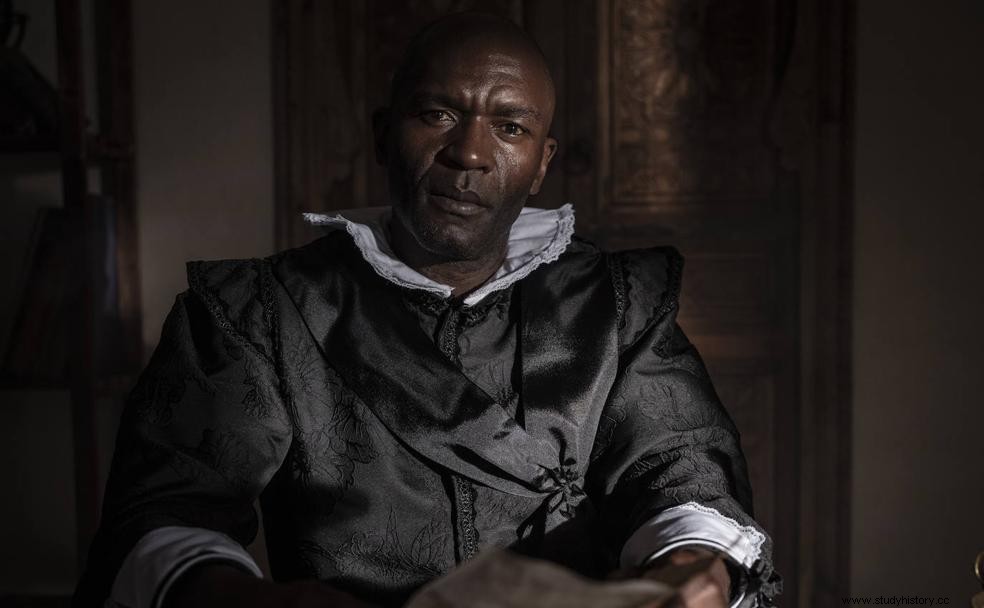Latino John he was a slave of African descent who became a professor at the University of Granada. So, he did not start from a privileged position, in fact in that sixteenth century he was the lowest rung in society. A simple slave forgotten today but who was a benchmark of his time. Even two of the greatest writers in our history, Cervantes and Lope de Vega, spoke wonders about him.
There are various theories of its origin, some say that as a child he was captured by the Portuguese in Africa and sold as a slave in Seville, and others that he was the son of a slave and was born on the peninsula back in 1518. What can be said ensure is that he was a slave, specifically in the personal service of Gonzalo Fernández de Córdoba , the grandson of the Great Captain, and of African descent.

Although it is only a time and a place, because unfortunately slavery has existed throughout the centuries, whenever we speak of slavery, the image of Africans working on plantations in the American continent comes to mind. It can even be difficult to imagine a city like Seville in the 16th century with slaves.
And what was slavery like in that Spain?
From the 16th century, slaves were captured in the interior and on the coasts of Africa and taken en masse to the American continent, but they also arrived in Spain, specifically to the ports of Cádiz and Seville from the 14th century. And there they were sold to the highest bidder to perform the hardest and heaviest jobs. Logically, only the aristocracy, the nobility, the clergy and wealthy artisans and merchants could afford this luxury. In addition, the number of slaves marked the social status of each family. In fact, at some times the number of slaves came to represent a significant percentage of the population, for example in Seville up to 10%. It was even said that Seville looked like a chessboard. And in fact, they left their mark because even in something as Andalusian as Holy Week or flamenco there is evidence of the African presence. For example, in the oldest brotherhood that goes on procession during Holy Week in Seville:the Brotherhood of the Negritos. In fact, when it was created at the end of the 14th century, Holy Week did not exist as such. When the slaves were old or due to an accident or illness they were unable to work, some owners, the least, allowed them to continue in the houses for the services rendered or because they might even have some appreciation for them, but the rest -come on, the majority - they were thrown out on the street and left to their fate. Until he was appointed Archbishop of Seville Gonzalo de Mena . This cleric was not only one of those who preached, but also practiced by example, so at the end of the 14th century he ordered the construction of a kind of asylum on the outskirts of the city to house all those slaves. Around this social work a solidarity brotherhood was created formed by the slaves and those who selflessly attended them, which was later called "los negritos". It is the brotherhood of Holy Week oldest of those that exist today.

“Three boys” – Bartolomé Esteban Murillo (1670)
And flamenco? Does it have to do with singing or dancing?
It has to do with the dance, which is a cultural mixture of the Andalusians themselves, the gypsies who came from India and African dances. But there is also an instrument that has African origin and that Paco de Lucía took it upon himself to incorporate into flamenco:the flamenco cajon. The Africans brought to the American continent brought with them their music, basically percussion. They played their drums in their ancestral rituals, until it was thought that they used them to communicate with each other and prepare uprisings. So, they were banned, and since they weren't willing to give up their music, they looked for a way to substitute their drums with what they had on hand. And they did it with the wooden crates or boxes used to transport products. And from those fruit boxes, the flamenco drawers of today. A little over 40 years ago, on a trip to Peru, maestro Paco de Lucía heard the sound of the cajons and knew that they would fit perfectly into his music. They fit in so well with flamenco that many people think they've always been there.

As I was saying, Juan was the slave of Gonzalo Fernández de Córdoba, the grandson of the Great Captain . After the death of his parents in Italy, the relatives took care of little Gonzalo and his sisters. They were taken to Granada and there they were educated by the best preceptors and teachers in the city -remember that they were from a noble family on their father and mother's sides-. And this is where Juan appears, a little older than Gonzalo, who became a kind of personal servant and, while they were young, a playmate. Gonzalo, who will be the future Duke of Sessa and Count of Cabra, had to be trained in different disciplines, and Juan also took advantage of those private classes. Juan stayed around, as if thinking of the shrews, not disturbing, but soaking up all the teachings. When Gonzalo went to the University, since Juan was forbidden to enter the classrooms, he stayed outside with his ear glued to the door, continuing with his self-training. One of these days when he was attending classes from the corridor, Mr. Pedro de la Mota approached him. , teacher, professor and a reference in that University. He had been watching him for some time and wanted to meet that boy who showed more desire to learn than many of those who were in the classroom. They chatted for several days and he decided to personally train the boy.
A professor training a slave?
From this moment until Juan's death, everything in his life was going to be to destroy the stereotypes of that society and break its rules. Logically, the professor had to ask Gonzalo for permission, and he granted it without any hesitation. They had been raised together and their relationship went beyond that between a servant and his master. After several years of work, dedication and effort - because Juan continued to have obligations just like any other slave - he managed to complete his studies in Grammar and Latin Language. And Don Pedro wanted to go one step further. Despite having a godfather of throne, he was always discreet, he was still a slave and he knew that his leading role was not liked by everyone. But there are times in life when the planets align, and that's how it happened:I had the approval of one of the most powerful families, with the support of the most prestigious professor at the University and, through him, with the alderman of the teaching institution, the Archbishop of Granada Pedro Guerrero . In this way, Juan Latino became a professor and, years later when his mentor passed away, professor of Grammar and Latin Language at the University of Granada. Of course, before his appointment, Gonzalo granted him his freedom. He had gone from not being able to enter the classes to being a teacher in those same classrooms, but Juan did not care where he had come from and where he had come from, he only cared about learning and, later, teaching. He did not seek to be recognized, his recognition came through his work.
Literary world.
Our already professor worked as a teacher for several years and also made his first steps in the literary world. He published several works, all in Latin, in which he proved to be a master in the noble art of putting words together and a learned Latinist, and for this Cervantes praised him:for his handling of Latin. And what was his best-known work? I would opt for the Austriadis Carmen , an epic poem, in the style of Virgil's Aeneid, in which he recalls and sings about the victory of Don Juan of Austria over the Ottomans at the Battle of Lepanto. But it even seems that he was in a hurry to publish it because the battle of Lepanto dates from 1571 and the following year the work was published, which also consisted of two books and was written in verse. They say, and I cannot assure you of this, that he had met Don Juan of Austria a couple of years before when he was in Granada to put down the Moorish rebellion in the Alpujarras, and that is why he was the protagonist of the works of him. He also wrote a heartfelt elegy to Gonzalo Fernández de Córdoba in which he called him brother and thanked him for how much he owed him:being a free and cultured man.
But there is still one more detail that will unsettle you. King Felipe II had ordered the transfer of the bodies of his ancestors buried in Granada to the Escorial. Logically, for the city it was a great loss and they tried, to the best of their ability since it was the king, that at least the bodies of the Catholic Monarchs remained in the Royal Chapel. And why don't you know who was entrusted with that task? To Juan. Both the local authorities and the Granada ecclesiastical authority decided that it should be him, so you can already get an idea of the status he had acquired. And he got it…
And how did he do it?
Well, using his best weapons:his poetic compositions. He dedicated some poems to Felipe II in which he praised his person, his lineage, his relatives buried there, and then described Granada as the mother who always welcomes and protects her own, who breathes relieved and happy when she has yours in your lap. And before finishing by promising eternal loyalty to the crown, he begged her to reconsider his decision regarding his great-grandparents, since they themselves had written that they wanted to rest in the capital of the old Nasrid Kingdom. Said and done. Felipe II ordered the transfer of the remains of his mother, his first wife and his two brothers Fernando and Juan, but allowed the Catholic Monarchs to remain in Granada. So it can be said that Juan is responsible for the fact that today the remains of the Catholic Monarchs are in the Royal Chapel of Granada.

Emilio Buale playing the role of Juan Latino in «Cachita. Slavery erased»
And what about his personal life? Did he marry him? Did he have children?
On your line. He kept breaking the norms of society. Before being appointed professor, he also gave private lessons to the sons of some nobles. Well, sons and daughters. And one of them was Ana Carleval, daughter of the manager of her friend Don Gonzalo, who was said to be one of the most beautiful women in the city. Despite the fact that her father had already promised her in marriage, her teacher and her student started a sneaky romance. It could not be otherwise, because at that time Juan was still a slave and she was white and belonged to the nobility. And between fooling around and fooling around, Ana got pregnant. A total scandal. Although Ana's father would have hung him from her main mast, he had no choice but to break the prenuptial agreement and agree to the marriage. She had a lot to do with the support of Juan from the Fernández de Córdoba family and his mediation with his father. I also tell you that without a fait accompli, it would have been almost impossible, despite Juan's reputation, a match between a slave of African origin and a beautiful lady from high society.
And they were happy and ate partridges?
Well really yes. They had several children and Juan was practicing until he went blind and had to leave the chair. He died in his eighties. And this is the story of Juan Latino, as they called the former African slave who broke with all the molds of that society:he graduated from the University of Granada, where he became a professor; he was the first black person to publish a book in print and also the first to write a work in Latin; he married a noblewoman and was a cultural reference of the time. And with all these arguments, why do you think he is barely remembered? I think, and it is my opinion, that if he had written in Spanish instead of Latin he would be more popular and his work would have been studied alongside that of the writers of the Spanish Golden Age, the century of Cervantes, Lope de Vega, Quevedo, Góngora … and other great authors of our history.
Source:Influencers (Storytel)
My latest book is now on sale on Amazon:
